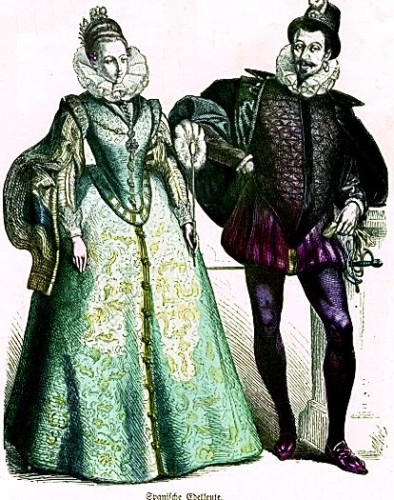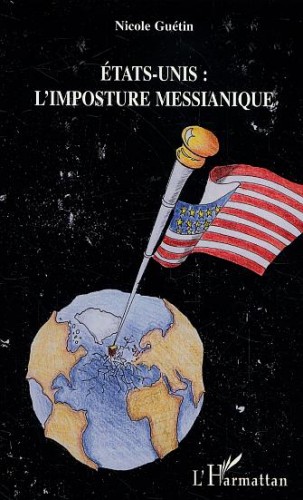Ex: http://www.counter-currents.com/
Jack Malebranche (Jack Donovan)
Androphilia: A Manifesto
Baltimore, Md.: Scapegoat Publishing, 2006
Near the end of Androphilia, Jack Donovan writes “It has always seemed like some profoundly ironic cosmic joke to me that the culture of men who love men is a culture that deifies women and celebrates effeminacy. Wouldn’t it make more sense if the culture of men who are sexually fascinated by men actually idolized men and celebrated masculinity?” (p. 115).
He has a point there. As Donovan notes, homosexual porn is almost exclusively focused on hypermasculine archetypes: the lumberjack, the marine, the jock, the cop, etc. (I am going to employ the term “homosexual,” despite its problematic history, as a neutral term to denote same-sex desire among men. I am avoiding the term “gay,” for reasons that will soon be apparent.) So why are homosexuals, who worship masculine men, so damn queeny? Most straight men (and women too) would offer what they see as the obvious answer: homosexuals are not real men. They are a sort of strange breed of womanly man, and it is precisely the otherness of masculine men that attracts them so. This is, after all, the way things work with straight people: men are attracted to women, and vice versa, because they are other. We want what we are not. Therefore, if a man desires another man then he must not be a real man.
What makes this theory so plausible is that so many self-identified homosexuals do behave in the most excruciatingly effeminate manner. They certainly seem to be not-quite-men. Donovan thinks (and I believe he is correct) that it is this womanish behavior in homosexuals that bothers straight men so much – more so, actually, than the fact that homosexuals have sex with other men in the privacy of their bedrooms.
Donovan objects to effeminacy in homosexuals as well, but he sees this effeminacy as a socially-constructed behavior pattern; as a consequence of the flawed logic that claims “since we’re attracted to what’s other, if you’re a man attracted to a man you must not be a real man.” Having bought into this way of seeing things, the “gay community” actually encourages its members to “camp it up” and get in touch with their feminine side. They think they are liberating themselves, but what they don’t see is that they have bought into a specific set of cultural assumptions which effectively rob them of their manhood, in their own eyes and in the eyes of society.
Donovan argues, plausibly, that homosexual attraction should be seen as a “variation in desire” among men (p. 21). Homosexuals are men — men who happen to be attracted to other men. Their sexual desire does not make them into a separate species of quasi-men. This is a point that will be resisted by many, but it is easily defended. One can see this simply by reflecting on how difficult it is to comprehend the homosexuals of yore in the terms we use today to deal with these matters. There was, after all, unlikely to have been anything “queeny” (and certainly not cowardly) about the Spartan 300, who were 150 homosexual couples. And the samurai in feudal Japan were doing it too — just to mention two examples. These are not the sort of people one thinks of as “sensitive” and who one would expect to show up at a Lady Gaga concert, were they around today. It is unlikely that Achilles and his “favorite” Patroclus would have cruised around with a rainbow flag flying from their chariot. These were manly men, who happened to sexually desire other men. If there can be such men, then there is no necessary disjunction between homosexuality and masculinity. QED.
In essential terms, what Donovan argues in Androphilia is that homosexuals should reject the “gay culture” of effeminacy and reclaim masculinity for themselves. Ironically, gay culture is really the product of an internalization of the Judeo-Christian demonization of same-sex desire, and its insistence that homosexuality and masculinity are incompatible. Donovan wants gays to become “androphiles”: men who love men, but who are not defined by that love. “Gay men” are men who allow themselves to be defined entirely by their desire, defined into a separate segment of humanity that talks alike, walks alike, dresses alike, thinks alike, votes alike, and has set itself apart from “breeders” in fashionable urban ghettos. “Gay” really denotes a whole way of life “that promotes anti-male feminism, victim mentality, and leftist politics” (p. 18). (This is the reason Donovan often uses “homo” instead of “gay”: gay is a package deal denoting much more than same-sex desire.) He argues that in an effort to promote acceptance of men with same-sex desire, homosexuals encouraged others to regard them as, in effect, a separate sex — really, almost a separate race. “Gay,” Donovan remarks, is really “sexuality as ethnicity” (p. 18). As a result, gay men have cut themselves off from the fraternity of men and, arguably, trapped themselves in a lifestyle that stunts them into perpetual adolescence. Donovan asks, reasonably, “Why should I identify more closely with a lesbian folk singer than with [straight] men my age who share my interests?”
Many of those who have made it this far into my review might conclude now that Androphilia is really a book for homosexuals, and doesn’t have much to say to the rest of the world. But this is not the case. Donovan’s book contains profound reflections on sexuality and its historical construction (yes, there really are some things that are historically constructed), the nature of masculinity, the role of male bonding in the formation of culture, and the connection between masculinity and politics. This book has implications for how men — all men — understand themselves.
Donovan attacks head-on the attempt by gays to set themselves up as an “oppressed group” on the model of blacks and women, and to compel all of us to refrain from uttering a critical word about them. He attacks feminism as the anti-male ideology it is. And he zeroes in on the connection, taken for granted by nearly everyone, between gay culture and advocacy of left-wing causes. Androphilia, in short, is a book that belongs squarely on the political right. It should be no surprise to anyone to discover that Donovan has been busy since the publication of Androphilia writing for sites like Alternative Right and Spearhead.
Donovan himself was a part of the gay community when he was younger, but never really felt like he belonged. He so much as tells us that his desire for men is his religion; that he worships masculinity in men. But it seemed natural to Donovan that since he was a man, he should cultivate in himself the very qualities he admired in others. His desire was decidedly not for an “other” but for the very qualities that he saw, proudly, in himself. (He says at one point, “I experience androphilia not as an attraction to some alien opposite, but as an attraction to variations in sameness,” p. 49).
Donovan is certainly not alone. It’s natural when we think of homosexuals to visualize effeminate men, because those are the ones that stand out. If I asked you to visualize a Swede you’d probably conjure up a blonde-haired, blue-eyed Nordic exemplar. But, of course, a great many Swedes are brunettes (famous ones, too; e.g., Ingmar Bergman). The effeminate types are merely the most conspicuous homosexuals. But there also exists a silent multitude of masculine men who love men, men whom no one typically pegs as “gay.” These men are often referred to as “straight acting” — as if masculinity in a homosexual is necessarily some kind of act. These men are really Donovan’s target audience, and they live a tragic predicament. They are masculine men who see their own masculinity as a virtue, thus they cannot identify with what Donovan calls the Gay Party (i.e., “gay community”) and its celebration of effeminacy. They identify far more closely with straight men, who, of course, will not fully accept them. This is partly due to fear (“is he going to make a pass at me?”), and partly, again, due to the prevailing view which equates same-sex desire with lack of manliness. The Jack Donovans out there are lost between two worlds, at home in neither. Loneliness and sexual desire compels such men to live on the periphery of the gay community, hoping always to find someone like themselves. If they have at all internalized the message that their desires make them less-than-men (and most have), then their relationship to masculinity will always be a problematic one. They will always have “something to prove,” and always fear, deep down, that perhaps they are inadequate in some fundamental way.
Androphilia is therapy for such men, and a call for them to form a new identity and group solidarity quite independent of the “gay community.” On the one hand, Donovan asserts that, again, homosexuality should be seen as a “variation in desire” among men; that homosexuals should see themselves as men first, and not be defined entirely by their same-sex desire. On the other hand, it is very clear that Donovan also has high hopes that self-identified androphiles will become a force to be reckoned with. He writes at one point, “While other men struggle to keep food on the table or get new sneakers for Junior, androphiles can use their extra income to fund their endeavors. This is a significant advantage. Androphiles could become leaders of men in virtually any field with comparative ease. By holding personal achievement in high esteem, androphiles could become more than men; they could become great men” (p. 88).
Is Jack Donovan — the androphile Tyler Durden — building an army? Actually, it looks more like he’s building a religion, and this brings us to one of the most interesting aspects of Androphilia. Repeatedly, Donovan tells us that “masculinity is a religion,” or words to that effect (see especially pp. 65, 72, 76, 80, 116).
A first step to understanding what he is talking about is to recognize that masculinity is an ideal, and a virtue. Men strive to cultivate masculinity in themselves, and they admire it in other men. Further, masculinity is something that has to be achieved. Better yet, it has to be won. Femininity, on the other hand, is quite different. Femininity is essentially a state of being that simply comes with being female; it is not an accomplishment. Women are, but men must become. If femininity has anything to do with achievement, the achievement usually consists in artifice: dressing in a certain manner, putting on makeup, learning how to be coy, etc. Femininity is almost exclusively bound up with being attractive to men. If a man’s “masculinity” consisted in dressing butch and not shaving, he would be laughed at; his “masculinity” would be essentially effeminate. (Such is the masculinity, for example, of gay “bears” and “leatherman.”) Similarly, if a man’s “masculinity” consists entirely in pursuing women and making himself attractive to them, he is scorned by other men. (Ironically, such “gigolos” are often far more effeminate mama’s boys than many homosexuals.) No, true masculinity is achieved by accomplishing something difficult in the world: by fighting, building something, discovering something, winning a contest, setting a record, etc. In order for it to count, a man has to overcome things like fear and opposition. He has to exhibit such virtues as bravery, perseverance, commitment, consistency, integrity, and, often, loyalty. Masculinity is inextricably tied to virtue (which is no surprise — given that the root vir-, from which we also get “virile,” means “man”). A woman can be petty, fickle, dishonest, fearful, inconstant, weak, and unserious — and still be thought of as 100% feminine.
A woman can also be the butchest nun, women’s lacrosse coach, or dominatrix on the planet and never be in any danger of someone thinking she’s “not a real woman.” With men, it’s completely different. As the example of homosexuals illustrates, it is quite possible to have a y chromosome and be branded “not a real man.” Masculinity, again, is an ideal that men are constantly striving to realize. The flip side of this is that they live in constant fear of some kind of failure that might rob them of masculinity in their eyes or the eyes of others. They must “live up” to the title of “man.” Contrary to the views of modern psychologists and feminists, this does not indicate a “problem” with men that they must somehow try to overcome. If men did not feel driven to make their mark on the world and prove themselves worthy of being called men, there would be no science, no philosophy, no art, no music, no technology, no exploration.
“But there would also be no war, no conflict, no competition!” feminists and male geldings will shriek in response. They’re right: there would be none of these things. And the world would be colorless and unutterably boring.
As Camille Paglia famously said, “If civilization had been left in female hands, we would still be living in grass huts.” She also said “There is no female Mozart because there is no female Jack the Ripper.” What this really means is that given the nature of men, we can’t have Mozart without Jack the Ripper. So be it.
It should now be a bit clearer why Donovan says that “masculinity is a religion.” To quote him more fully, “masculinity is not just a quality shared by many men, but also an ideal to which men collectively aspire. Masculinity is a religion, one that naturally resonates with the condition of maleness. Worship takes place at sports arenas, during action films, in adventure novels and history books, in frat houses, in hunting lodges” (p. 65).
Earlier in the book he writes: “All men appreciate masculinity in other men. They appreciate men who are manly, who embody what it means to be a man. They admire and look up to men who are powerful, accomplished or assertive. . . . Men respectfully acknowledge another man’s impressive size or build, note a fierce handshake, or take a friendly interest in his facial hair. . . . Sportscasters and fans speak lovingly of the bodies and miraculous abilities of their shared heroes. . . . While straight men would rather not discuss it because they don’t want to be perceived as latent homosexuals, they do regularly admire one another’s bodies at the gym or at sporting events” (p. 22). None of this is “gay,” “latently gay,” or “homoerotic.” This is just men admiring manliness. One of the sad consequences of “gay liberation” (and Freudian psychology) is that straight men must now police their behavior for any signs that might be read as “latency.” And gay liberation has destroyed male bonding. Just recently I re-watched Robert Rossen’s classic 1961 film The Hustler. In the opening scene, an old man watches a drunken Paul Newman playing pool and remarks to a friend, “Nice looking boy. Clean cut. Too bad he can’t hold his liquor.” No straight man today would dream of openly admiring another man’s appearance and describing him as “nice looking,” even though there need be nothing sexual in this at all.
Of course, there is something decidedly sexual in androphilia. The androphile admires masculinity in other men also, but he has a sexual response to it. An androphile may admire all the same qualities in a man that a straight man would, but the androphile gets turned on by them. Here we must note, however, that although the straight man admires masculinity in men he generally spends a lot less time reflecting on it than an androphile does. And there are innumerable qualities in men (especially physical qualities) which androphiles notice, but which many straight men are completely oblivious to. In fact, one of the characteristics of manly men is a kind of obliviousness to their own masculine attractiveness. Yes, straight men admire masculinity in other men and in themselves — but this is often not something that is brought fully to consciousness. No matter how attractive he may be, if a man is vain, his attractiveness is undercut — and so is his masculinity. Men are attractive — to women and to androphiles — to the extent that their masculinity is something natural, unselfconscious, unaffected, and seemingly effortless. Oddly, lack of self-consciousness does seem to be a masculine trait. Think of the single-minded warrior, uncorrupted by doubt and introspection, forging ahead without any thought for how he seems to others, unaware of how brightly his virtue and heroism shine.
What all this means is that androphilia is masculinity brought to self-consciousness. To put it another way, the androphile is masculinity brought to awareness of itself. It is in the androphile that all that is good and noble and beautiful in the male comes to be consciously reflected upon and affirmed. It is in androphiles like Jack Donovan that the god of masculinity is consciously thematized as a god, and worshipped. Masculinity is a religion, he tells us again and again.
Now, I said a few lines earlier that lack of self-consciousness seems to be a masculine trait. If in androphiles a greater self-consciousness of masculinity is achieved, doesn’t this mean that androphiles are somehow unmasculine? Actually what it means is that they are potentially hyper-masculine. It is true that we admire unselfconscious figures like Siegfried or Arjuna, because they seem to possess a certain purity. But such men are always ultimately revealed to be merely the plaything of forces over which they have no control. Greater still then a naïve, unselfconscious purity is the power of an awakened man, who consciously recognizes and cultivates his virtues, striving to take control of his destiny and to perfect himself. This is part and parcel of the ideal of spiritual virility Julius Evola spoke of so often.
The difference between Siegfried and Arjuna is that the latter had the god Krishna around to awaken him. Krishna taught him that he is indeed a plaything of forces over which he has no control. But Arjuna then affirmed this, affirmed his role in the cosmic scheme as the executioner of men, and became the fiercest warrior that had ever lived.
Most men unconsciously follow the script of masculinity, pushed along by hormones to realize the masculine ideal — usually only to find the same hormones putting them in thrall to women and, later, children. Androphiles consciously recognize and affirm masculinity, and because their erotic desires are directed towards other men, they have the potential to achieve far more in the realm of masculine accomplishment than those who, again, have to “struggle to keep food on the table or get new sneakers for Junior.” Thus, far from being “unmasculine,” androphiles have it within their power to become, well, Overmen. Androphiles have awakened to the god in themselves and other men. There is an old saying on the Left Hand Path: “There is no god above an awakened man.” There is also no man above an awakened man. So much for the idea that a man’s love for other men is a badge of inferiority.
Implicit in the above is something I have not remarked on thus far, and that Donovan does not discuss: the duality in the masculine character. It is a rather remarkable thing, as I alluded to earlier, that testosterone both makes a man want to fight, to strive, and to explore — and also to inseminate a woman and tie himself down to home and family. Of course, without that latter effect the race would die out. But it is nevertheless the case that men are pulled in two directions, just by being men: towards heaven and towards earth. To borrow some terms from Evola again, they have within themselves both uranic and chthonic tendencies. Modern biologists have a way of dealing with this: they insist that all of life is nothing but competition for resources and reproduction. Thus, all of men’s uranic striving, all of their quest for the ideal, all of their adventures and accomplishments, are nothing more than ways in which they make themselves more attractive to females. This is sheer nonsense: nothing but the mindset of modern, middle-class, hen-pecked professors projected onto all of nature.
The truth is that men strive to realize the ideal of masculinity in ways that not only have nothing to do with the furtherance of the species, but are often positively inimical to it. Perhaps the best and most extreme example of masculine toughness one could give is the willingness of the samurai to disembowel themselves over questions of honor. Men strive for ideals, often at the expense of life. Masculinity has a dimension that can best be described as supernatural — as above nature. Women are far more tied to nature than men are, and this (and not sexist oppression) is the real reason why it is almost exclusively men who have been philosophers, priests, mystics, scientists, and artists. It is woman’s job to pull man back to earth and perpetuate life.
One way to look at androphilia is that it is not just the masculine come to consciousness of itself, but the masculine ridding itself of the “natural.” This “natural” side of the man is not without value (again, without it we would go extinct), but it has almost nothing to do with what makes men great. The androphile is free to cultivate the truly masculine aspects of the male soul, because he is free of the pull of the feminine and of the natural. This has to have something to do with why it is that so many great philosophers, artists, writers, mystics, and others, have tended to be androphiles. In 1913, D. H. Lawrence wrote the following to a correspondent: “I should like to know why nearly every man that approaches greatness tends to homosexuality, whether he admits it or not: so that he loves the body of a man better than the body of a woman — as I believe the Greeks did, sculptors and all, by far. . . . He can always get satisfaction from a man, but it is the hardest thing in life to get one’s soul and body satisfied from a woman, so that one is free for oneself. And one is kept by all tradition and instinct from loving a man.”
The androphile, again, is masculinity brought to consciousness of itself — and in him, it would seem, much else is brought to consciousness as well. For what else are science, philosophy, religion, art, and poetry but the world brought to consciousness of itself? These things — which are almost exclusively the products of men — are what set us apart and make us unique as a species. Human beings (again, almost exclusively men), unlike all other species, are capable of reflecting upon and understanding the world. We do this in scientific and philosophical theories, but also in fiction, poetry, and painting. Some of us, of course, are more capable of this than others — capable of achieving this reflective stance towards existence itself. And it would seem that of those men that are, some carry things even further and become fully aware of the masculine ideal that they themselves represent. And they fall in love with this. Sadly, androphile writers, artists, poets, etc., have often bought into the notion that their desire for other men makes them unmasculine and, like Oscar Wilde, have shoe-horned themselves into the role of the decadent, effeminate aesthete.
I think that when Donovan describes masculinity as a religion this is not just a desire to be provocative. I think he does experience his admiration for men as sacred. If this is the case, then it is natural for men who feel as he does to insist that such a feeling cannot be indecent or perverse. Further, it is natural for them to wonder why there are men such as themselves. What I have tried to do in the above reflections (which go beyond what Donovan says in his book) is to develop a theory of the “cosmic role,” if you will, of the masculine itself, and of the androphile. I believe Donovan is thinking along the same lines I am, though he might not express things the same way. He writes at one point:
Masculinity is a religion, and I see potential for androphiles to become its priests — to devote themselves to it and to the gods of men as clergymen devote their lives to the supernatural. What other man can both embody the spirit of manhood and revere it with such perfect devotion? This may sound far-fetched, but is it? If so, then why? Forget about gay culture and everything you associate with male homosexuality. Strip it down to its raw essence — a man’s sexual desire for men — and reimagine the destiny of that man. Reimagine what this desire focused on masculinity could mean, what it could inspire, and who the men who experience it could become. (p. 116)
There is much else in Androphilia that is well-worth discussing, though a review cannot cover everything. Particularly worthy of attention is Donovan’s discussion of masculinity in terms of what he calls physical masculinity, essential masculinity, and cultural masculinity. Then there is Donovan’s discussion of masculine “values.” These really should be called “virtues” (especially given the etymology of this word — mentioned earlier — Donovan his missed a bit of an opportunity here!). The language of “values” is very modern. What he really has in mind is virtues in the Aristotelian sense of excellences of the man. Donovan lists such qualities as self-reliance, independence, personal responsibility, achievement, integrity, etc. He starts to sound a bit like Ayn Rand in this part of the book, but it’s hard to quarrel with his message. The book ends with a perceptive discussion of “gay marriage,” which Donovan opposes, seeing it as yet another way in which gays are aping straight relationships, yearning narcissistically for society’s “approval.”
This is really a superb book, which all men can profit from, not just androphiles. If one happens to be an androphile, however, one will find this is a liberating and revolutionary work.
 Counter-Currents is pleased to announce our third limited edition hardcover:
Counter-Currents is pleased to announce our third limited edition hardcover:

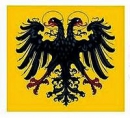
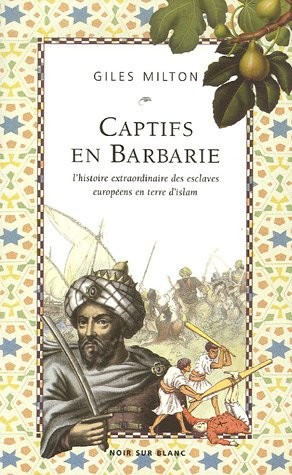 Dans son roman policier Le Phare, paru en 2008 à LGF/Livre de Poche et qu’elle situe à Combe Island, au large de la Cornouailles, l’Anglaise P. D. James signale à plusieurs reprises la terreur exercée par les pirates maghrébins, surtout ceux de Rabat-Salé, sur les côtes sud de l’Angleterre où ils s’étaient emparés de plusieurs îles, transformées en bastions. Le sort tragique et « l’histoire extraordinaire des esclaves européens en terre d’islam », c’est justement ce qu’a étudié l’historien Giles Milton, anglais lui aussi, dans Captifs en Barbarie.
Dans son roman policier Le Phare, paru en 2008 à LGF/Livre de Poche et qu’elle situe à Combe Island, au large de la Cornouailles, l’Anglaise P. D. James signale à plusieurs reprises la terreur exercée par les pirates maghrébins, surtout ceux de Rabat-Salé, sur les côtes sud de l’Angleterre où ils s’étaient emparés de plusieurs îles, transformées en bastions. Le sort tragique et « l’histoire extraordinaire des esclaves européens en terre d’islam », c’est justement ce qu’a étudié l’historien Giles Milton, anglais lui aussi, dans Captifs en Barbarie.
 del.icio.us
del.icio.us
 Digg
Digg

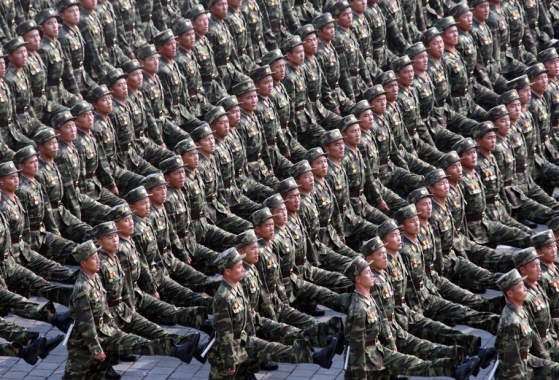
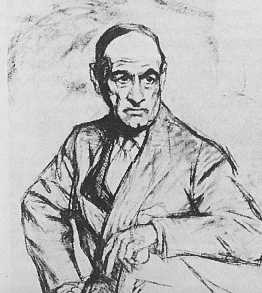 Sans doute le grand romancier trouva-t-il aussi dans le livre du philosophe, comme le remarque José Luis Goyenna dans son intéressante (quoique pleine de fautes) préface, en plus d'images étonnantes bien propres à enthousiasmer l'écrivain, une authentique philosophie de la liberté comme accomplissement métaphysique du moi qui, à la différence de celle de Sartre qualifiée par l'auteur d'Ultramarine de «pensée de seconde main» (2), ne se dépêcherait pas bien vite de déposer aux pieds de l'idole le fardeau trop pesant, enchaînant ainsi la liberté à la seule discipline stupide des masses. Tout lecteur de La révolte des masses aime je crois, en tout premier lieu, l'écriture de ce livre érudit, pressé, menaçant, parfois prodigieusement lucide et même, osons ce mot tombé dans l'ornière journalistique, prophétique.
Sans doute le grand romancier trouva-t-il aussi dans le livre du philosophe, comme le remarque José Luis Goyenna dans son intéressante (quoique pleine de fautes) préface, en plus d'images étonnantes bien propres à enthousiasmer l'écrivain, une authentique philosophie de la liberté comme accomplissement métaphysique du moi qui, à la différence de celle de Sartre qualifiée par l'auteur d'Ultramarine de «pensée de seconde main» (2), ne se dépêcherait pas bien vite de déposer aux pieds de l'idole le fardeau trop pesant, enchaînant ainsi la liberté à la seule discipline stupide des masses. Tout lecteur de La révolte des masses aime je crois, en tout premier lieu, l'écriture de ce livre érudit, pressé, menaçant, parfois prodigieusement lucide et même, osons ce mot tombé dans l'ornière journalistique, prophétique.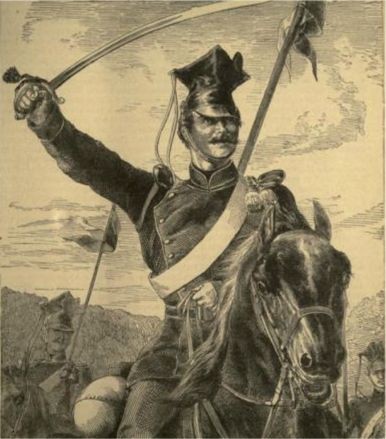

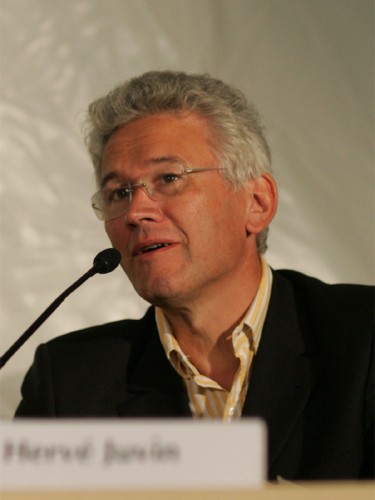 Hervé Juvin n’est pas qu’un économiste, ni uniquement un essayiste, non plus seulement le président d’Eurogroup Institute, il est encore et surtout un analyste incomparable, aussi lucide que courageux, du monde comme il ne va plus.
Hervé Juvin n’est pas qu’un économiste, ni uniquement un essayiste, non plus seulement le président d’Eurogroup Institute, il est encore et surtout un analyste incomparable, aussi lucide que courageux, du monde comme il ne va plus. 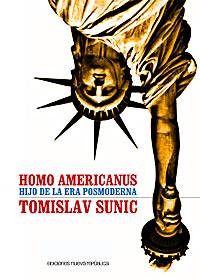 « (…) Tout dans l’Amérique est une copie grotesque de la réalité », constate l’universitaire et géopoliticien Tomislav Sunic dans Homo americanus, rejeton de la postmodernité, passionnante étude que viennent de publier les éditions Akribeia. « L’Amérique postmoderne fonctionne depuis 1945 comme une photocopie géante de la métaréalité ; non l’Amérique telle qu’elle est, mais l’Amérique telle qu’elle devrait être dans le monde entier. La seule différence est que, au XXIe siècle, l’histoire (…) est passée à la vitesse supérieure. Les événements se succèdent de façon désordonnée et foncent à toute allure vers un chaos total » – ce « chaos total » que l’idéologue néo-conservateur Michael Ledeen, pilier de la World Jewish Review et l’un des principaux inspirateurs de George W. Bush dans la guerre contre l’Irak, appelait de ses vœux dès 2001 car il y voyait le seul moyen d’instaurer un gouvernement mondial.
« (…) Tout dans l’Amérique est une copie grotesque de la réalité », constate l’universitaire et géopoliticien Tomislav Sunic dans Homo americanus, rejeton de la postmodernité, passionnante étude que viennent de publier les éditions Akribeia. « L’Amérique postmoderne fonctionne depuis 1945 comme une photocopie géante de la métaréalité ; non l’Amérique telle qu’elle est, mais l’Amérique telle qu’elle devrait être dans le monde entier. La seule différence est que, au XXIe siècle, l’histoire (…) est passée à la vitesse supérieure. Les événements se succèdent de façon désordonnée et foncent à toute allure vers un chaos total » – ce « chaos total » que l’idéologue néo-conservateur Michael Ledeen, pilier de la World Jewish Review et l’un des principaux inspirateurs de George W. Bush dans la guerre contre l’Irak, appelait de ses vœux dès 2001 car il y voyait le seul moyen d’instaurer un gouvernement mondial.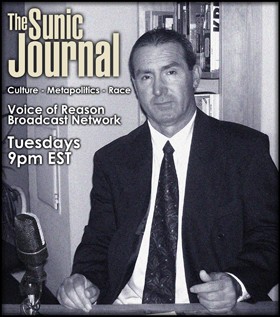 « Pendant que les Juifs russes inventent le socialisme et que les Juifs autrichiens découvrent la psychanalyse, les Juifs américains participent, au tout premier rang, à la naissance du capitalisme américain et à l’américanisation du monde », a reconnu, cité par Sunic, Jacques Attali dans Les Juifs, le monde et l’argent (Fayard 2002). Il est donc logique que Homo americanus et Homo sovieticus aient présenté tant de points communs tels le non-respect des Conventions de Genève sur les prisonniers de guerre ou l’envoi des dissidents dans des hôpitaux psychiatriques – sort réservé en 1945 à Ezra Pound, le plus grand poète états-unien jugé trop favorable au fascisme italien. Et logique aussi que « l’américanisation du monde », y compris du monde ex-soviétique (par le truchement de certains oligarques patrons de presse), soit menée tambour battant.
« Pendant que les Juifs russes inventent le socialisme et que les Juifs autrichiens découvrent la psychanalyse, les Juifs américains participent, au tout premier rang, à la naissance du capitalisme américain et à l’américanisation du monde », a reconnu, cité par Sunic, Jacques Attali dans Les Juifs, le monde et l’argent (Fayard 2002). Il est donc logique que Homo americanus et Homo sovieticus aient présenté tant de points communs tels le non-respect des Conventions de Genève sur les prisonniers de guerre ou l’envoi des dissidents dans des hôpitaux psychiatriques – sort réservé en 1945 à Ezra Pound, le plus grand poète états-unien jugé trop favorable au fascisme italien. Et logique aussi que « l’américanisation du monde », y compris du monde ex-soviétique (par le truchement de certains oligarques patrons de presse), soit menée tambour battant.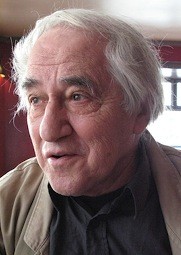 Fiction: en juillet 1940, Hitler parvient à forcer la main au général Franco qui laisse passer les troupes allemandes sur son territoire. Gibraltar tombe et les panzers, après avoir traversé le Maroc et l'Algérie, foncent sur Le Caire. 300.000 prisonniers français sont libérés et commis aux moissons. La popularité du vieux maréchal est au zénith. Un débarquement allemand a lieu en Irlande du Sud. Malte tombe aux mains des paras de la Luftwaffe de Goering. Churchill est mis en minorité et remplacé par Lord Halifax, qui fait la paix, en échange des puits de pétrole du Moyen Orient, qui restent sous contrôle britannique. Pourquoi faire la guerre dans ces conditions? Le succès de l'opération Barbarossa est quasi complet et, rapidement, les troupes de l'Axe font jonction dans le Caucase. Par un coup d'audace inouï (Skorzeny?), Vladivostok tombe. C'est la panique au Japon, qui se rapproche des Américains. Dans l'Empire, c'est le délire: d'ailleurs, à Berlin, on joue Sartre à guichets fermés! Dans cette atmosphère de triomphalisme, l'épuration ethnique dont sont victimes les Juiffss prend heureusement fin et l'Empire favorisera même, pour gêner les Anglais, la naissance d'un Etat hébreu, armé par l'Allemagne. A Berlin, l'aile modérée menée par Bibbentrop, le cher Otto Tabetz, ou Krommel élimine les “natzis” forcenés. Une fausse explosion nucléaire, vers 1943, calme les Américains, qui se contentent d'armer la résistance soviétique (Staline combat toujours en Yakoutie). Une vraie bombe, que le Führer obtient grâce à ses réseaux d'espions (juiffss?) aux Etats-Unis, assure définitivement la neutralité américaine. Hitler meurt le 30 décembre 1946, à la veille du réveillon. Speer, l'amiral Panaris et surtout Gersdorff entreprennent une première “dénatzification” et, de 59 à 78, Stendel, le Führer suivant, proscrit le racisme et le remplace par le différentialisme critériologique: les Juiffss sont incités à collaborer ou à émigrer en Israël, où ils forment une tête de pont de l'Empire.
Fiction: en juillet 1940, Hitler parvient à forcer la main au général Franco qui laisse passer les troupes allemandes sur son territoire. Gibraltar tombe et les panzers, après avoir traversé le Maroc et l'Algérie, foncent sur Le Caire. 300.000 prisonniers français sont libérés et commis aux moissons. La popularité du vieux maréchal est au zénith. Un débarquement allemand a lieu en Irlande du Sud. Malte tombe aux mains des paras de la Luftwaffe de Goering. Churchill est mis en minorité et remplacé par Lord Halifax, qui fait la paix, en échange des puits de pétrole du Moyen Orient, qui restent sous contrôle britannique. Pourquoi faire la guerre dans ces conditions? Le succès de l'opération Barbarossa est quasi complet et, rapidement, les troupes de l'Axe font jonction dans le Caucase. Par un coup d'audace inouï (Skorzeny?), Vladivostok tombe. C'est la panique au Japon, qui se rapproche des Américains. Dans l'Empire, c'est le délire: d'ailleurs, à Berlin, on joue Sartre à guichets fermés! Dans cette atmosphère de triomphalisme, l'épuration ethnique dont sont victimes les Juiffss prend heureusement fin et l'Empire favorisera même, pour gêner les Anglais, la naissance d'un Etat hébreu, armé par l'Allemagne. A Berlin, l'aile modérée menée par Bibbentrop, le cher Otto Tabetz, ou Krommel élimine les “natzis” forcenés. Une fausse explosion nucléaire, vers 1943, calme les Américains, qui se contentent d'armer la résistance soviétique (Staline combat toujours en Yakoutie). Une vraie bombe, que le Führer obtient grâce à ses réseaux d'espions (juiffss?) aux Etats-Unis, assure définitivement la neutralité américaine. Hitler meurt le 30 décembre 1946, à la veille du réveillon. Speer, l'amiral Panaris et surtout Gersdorff entreprennent une première “dénatzification” et, de 59 à 78, Stendel, le Führer suivant, proscrit le racisme et le remplace par le différentialisme critériologique: les Juiffss sont incités à collaborer ou à émigrer en Israël, où ils forment une tête de pont de l'Empire.  L'Empire est résolument non humaniste et rejette sagement les droits de l'homme, qui ne sont jamais que “les droits du client”: “droit de chier des litanies de progénitures débilo-crédulo-proliférantes, pulluliques, malsaines, ivres de tuer leur prochain ou de leur passer la Grande Maladie”. Car la Maladie, venue de l'Ouest est interdite dans l'Empire: un corps d'élite veille et nettoie, liquidant impitoyablement malades infiltrés par les démothalassocrates, agents d'influence de la pourriture utilitairo-protestante et militants nationalistes (des Gagaouzes aux Vourdalaks). Pas question d'affaiblir l'Empire! Les chrétiens, et les croyeux
L'Empire est résolument non humaniste et rejette sagement les droits de l'homme, qui ne sont jamais que “les droits du client”: “droit de chier des litanies de progénitures débilo-crédulo-proliférantes, pulluliques, malsaines, ivres de tuer leur prochain ou de leur passer la Grande Maladie”. Car la Maladie, venue de l'Ouest est interdite dans l'Empire: un corps d'élite veille et nettoie, liquidant impitoyablement malades infiltrés par les démothalassocrates, agents d'influence de la pourriture utilitairo-protestante et militants nationalistes (des Gagaouzes aux Vourdalaks). Pas question d'affaiblir l'Empire! Les chrétiens, et les croyeux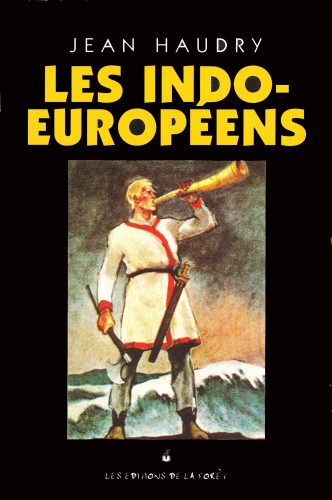
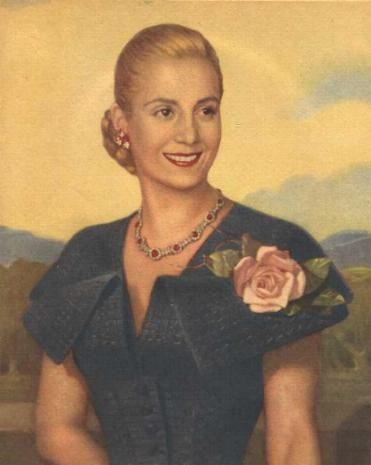
 Jean-Claude Rolinat a publié dernièrement, aux éditions Dualpha, une remarquable biographie d'Eva Peron.
Jean-Claude Rolinat a publié dernièrement, aux éditions Dualpha, une remarquable biographie d'Eva Peron. 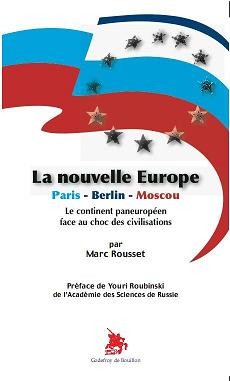
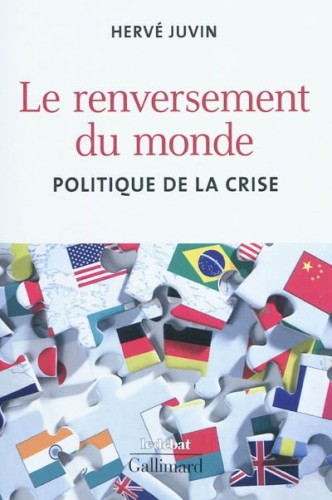
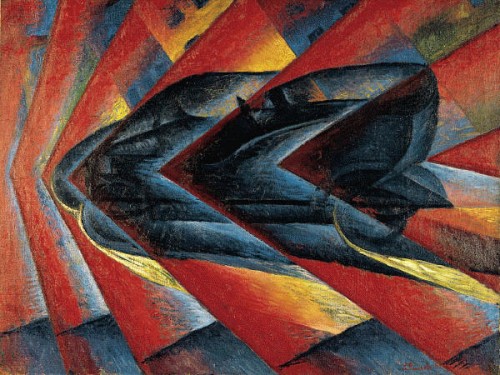
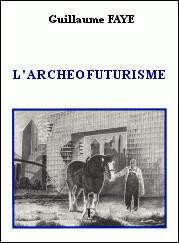 There is no question for him that the liberal project is doomed: although its proponents paint it as good and inevitable, egalitarian modernity is, in fact, a highly artificial condition, an unsustainable one, which will fall victim to the very processes it set in motion. Faye believes that we are currently facing a ‘convergence of catastrophes’. These include: the colonization of the North by Afro-Asian peoples from the South; an imminent economic and demographic crisis, caused by an aging population in the West, falling birthrates, and unfunded promises made by the democratic welfare state; chaos in the countries of the South, caused by absurd Western-sponsored development and development programs; a global economic crisis, much worse than the depression of the 1930s, led by the financial sector; ‘the surge of religious fundamentalist fanaticism, particularly in Islam;’ ‘the confrontation of North and South, on theological and ethnic grounds;’ unchecked environmental degradation; and the convergence of these catastrophes against a backdrop of nuclear proliferation, international mafias, and the reemergence of viral and microbial diseases, such as AIDS. For Faye, the way out is not through reform, because a system that is contrary to reality is beyond reform), but through collapse and revolution. As a catastrophic collapse is inevitable, revolutionary thought and action must today be post-catastrophic in outlook. He further suggests that inaction on our part will only open European civilization to conquest by Islam.
There is no question for him that the liberal project is doomed: although its proponents paint it as good and inevitable, egalitarian modernity is, in fact, a highly artificial condition, an unsustainable one, which will fall victim to the very processes it set in motion. Faye believes that we are currently facing a ‘convergence of catastrophes’. These include: the colonization of the North by Afro-Asian peoples from the South; an imminent economic and demographic crisis, caused by an aging population in the West, falling birthrates, and unfunded promises made by the democratic welfare state; chaos in the countries of the South, caused by absurd Western-sponsored development and development programs; a global economic crisis, much worse than the depression of the 1930s, led by the financial sector; ‘the surge of religious fundamentalist fanaticism, particularly in Islam;’ ‘the confrontation of North and South, on theological and ethnic grounds;’ unchecked environmental degradation; and the convergence of these catastrophes against a backdrop of nuclear proliferation, international mafias, and the reemergence of viral and microbial diseases, such as AIDS. For Faye, the way out is not through reform, because a system that is contrary to reality is beyond reform), but through collapse and revolution. As a catastrophic collapse is inevitable, revolutionary thought and action must today be post-catastrophic in outlook. He further suggests that inaction on our part will only open European civilization to conquest by Islam.
 VARSOVIE (NOVOpress) – Boguslaw Woloszanski, journaliste polonais, continue dans son nouvel ouvrage, 39-45 : les dossiers oubliés, aux Editions Jourdan, d’explorer les faces méconnues de la Seconde Guerre mondiale, sur la base notamment de la récente ouverture des archives de l’ex-Union Soviétique.
VARSOVIE (NOVOpress) – Boguslaw Woloszanski, journaliste polonais, continue dans son nouvel ouvrage, 39-45 : les dossiers oubliés, aux Editions Jourdan, d’explorer les faces méconnues de la Seconde Guerre mondiale, sur la base notamment de la récente ouverture des archives de l’ex-Union Soviétique.

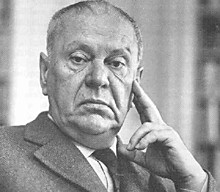
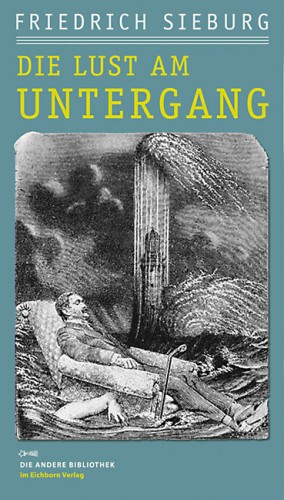 Man mag nicht glauben, daß 56 Jahre seit der Erstveröffentlichung des vorliegenden Bandes vergangen sind! Die Fragen, denen Sieburg sich hier in neun Kapiteln (etwa »Die Kunst, Deutscher zu sein«, »Vom Menschen zum Endverbraucher«) widmet, lesen sich nicht als Rückblick auf Gefechte von gestern. Sie sind noch ebensogut unsere Themen: Identitätssuche, Vergangenheitsbewältigung, Konsumwahn, die Grenze zwischen Privatheit und Öffentlichkeit. Auch wo seine Angelegenheiten einmal der unmittelbaren Aktualität entbehren – etwa in seiner bemerkenswerten Replik auf Curzio Malaparte (d.i. K.E. Suckert) oder in seinen Einlassungen zum Verlust der Ostgebiete – nickt man staunend. Ohne Twitter oder Ryan Air gekannt zu haben, spottet Sieburg über »das Management des Vergnügens«, die »Mechanisierung der Freizeit«. Er meinte damit – wie bescheiden aus heutiger Warte! – »Betriebsausflüge an den Comer See« und Klassenfahrten in die Alpen. »Der Vorschlag, die Kinder sollten an der Nidda Blumen suchen, würde heute auf allen Seiten große Heiterkeit hervorrufen.« Für Sieburg waren die Deutschen »ein Volk ohne Mitte«: »Im Deutschen, so glaubte die Welt gestern noch, ist mehr Explosivstoff angehäuft als in jedem anderen Erdenbewohner. Hat sich diese Ansicht geändert, sind beim Anblick des fleißigen und lammfrommen Bundesdeutschen, der sogar den Karneval straff organisiert und wirtschaftsbewußt dem Konsum dienstbar macht, der das Wort Europa dauernd im Mund führt, (…) den kein Aufmarsch mit Fahnen mehr aus seinem Wochenendhaus, seinem Faltboot und Volkswagen herauslocken kann, der nur noch zu den Vertretern versunkener Fürstenhäuser und zu Filmstars aufschaut, der einen harmonischen Bund zwischen Preußentum und Nackenfett eingegangen ist, (…) der vom Golf von Neapel bis zum Nordkap die schnellsten Wagen fährt, sich in Capri bräunen läßt (…), der sich aus Ordnungssinn mit der abstrakten Kunst und dem Nihilismus beschäftigt – sind, so frage ich, beim Anblick dieses Musterknaben, der sich in der Schule der Demokratie zum Primus aufarbeitet, alle Ängste und mißtrauische Befürchtungen verschwunden? Ich antworte, nein.«
Man mag nicht glauben, daß 56 Jahre seit der Erstveröffentlichung des vorliegenden Bandes vergangen sind! Die Fragen, denen Sieburg sich hier in neun Kapiteln (etwa »Die Kunst, Deutscher zu sein«, »Vom Menschen zum Endverbraucher«) widmet, lesen sich nicht als Rückblick auf Gefechte von gestern. Sie sind noch ebensogut unsere Themen: Identitätssuche, Vergangenheitsbewältigung, Konsumwahn, die Grenze zwischen Privatheit und Öffentlichkeit. Auch wo seine Angelegenheiten einmal der unmittelbaren Aktualität entbehren – etwa in seiner bemerkenswerten Replik auf Curzio Malaparte (d.i. K.E. Suckert) oder in seinen Einlassungen zum Verlust der Ostgebiete – nickt man staunend. Ohne Twitter oder Ryan Air gekannt zu haben, spottet Sieburg über »das Management des Vergnügens«, die »Mechanisierung der Freizeit«. Er meinte damit – wie bescheiden aus heutiger Warte! – »Betriebsausflüge an den Comer See« und Klassenfahrten in die Alpen. »Der Vorschlag, die Kinder sollten an der Nidda Blumen suchen, würde heute auf allen Seiten große Heiterkeit hervorrufen.« Für Sieburg waren die Deutschen »ein Volk ohne Mitte«: »Im Deutschen, so glaubte die Welt gestern noch, ist mehr Explosivstoff angehäuft als in jedem anderen Erdenbewohner. Hat sich diese Ansicht geändert, sind beim Anblick des fleißigen und lammfrommen Bundesdeutschen, der sogar den Karneval straff organisiert und wirtschaftsbewußt dem Konsum dienstbar macht, der das Wort Europa dauernd im Mund führt, (…) den kein Aufmarsch mit Fahnen mehr aus seinem Wochenendhaus, seinem Faltboot und Volkswagen herauslocken kann, der nur noch zu den Vertretern versunkener Fürstenhäuser und zu Filmstars aufschaut, der einen harmonischen Bund zwischen Preußentum und Nackenfett eingegangen ist, (…) der vom Golf von Neapel bis zum Nordkap die schnellsten Wagen fährt, sich in Capri bräunen läßt (…), der sich aus Ordnungssinn mit der abstrakten Kunst und dem Nihilismus beschäftigt – sind, so frage ich, beim Anblick dieses Musterknaben, der sich in der Schule der Demokratie zum Primus aufarbeitet, alle Ängste und mißtrauische Befürchtungen verschwunden? Ich antworte, nein.« Müdigkeit und Geschichtslosigkeit zeige, »die mit einer nie dagewesenen Nüchternheit« gepaart sei. »Nur der Deutsche schwärzt seinen Landsmann bei Fremden an, nur der Deutsche verständigt sich lieber mit einem Exoten als mit einem politischen Gegner eigenen Stammes (…), nur der Deutsche verleugnet Flagge, Hymne und Staatsform des Mutterlandes vor Dritten.« Als »dümmstes Schlagwort« seiner Zeit erschien dem Publizisten der schon damals opportune Vorwurf, »restaurative Tendenzen« zu befördern. Alles Große, Geniale, das Heldenhafte ohnehin, dessen die Deutschen einst fähig waren, werde nun verhöhnt und gegeißelt unter dem Vorwand, »daß die alten Zeiten nicht wiederkommen dürfen«. Ja, und wie furchtbar war auch der »deutsche Spießer!« Allerdings, so Sieburg, sei zu befürchten, daß der Spießer in neuem Gewand, nämlich mit »heraushängendem Hemd« nach US-Vorbild wiedergekehrt sei, und daß die »Vorurteilslosigkeit in der Kleidung, im Umgang mit dem anderen Geschlecht und den Nerven der Mitmenschen nicht eine höhere sittliche Freiheit und einen souveränen Geist« mit sich führe.
Müdigkeit und Geschichtslosigkeit zeige, »die mit einer nie dagewesenen Nüchternheit« gepaart sei. »Nur der Deutsche schwärzt seinen Landsmann bei Fremden an, nur der Deutsche verständigt sich lieber mit einem Exoten als mit einem politischen Gegner eigenen Stammes (…), nur der Deutsche verleugnet Flagge, Hymne und Staatsform des Mutterlandes vor Dritten.« Als »dümmstes Schlagwort« seiner Zeit erschien dem Publizisten der schon damals opportune Vorwurf, »restaurative Tendenzen« zu befördern. Alles Große, Geniale, das Heldenhafte ohnehin, dessen die Deutschen einst fähig waren, werde nun verhöhnt und gegeißelt unter dem Vorwand, »daß die alten Zeiten nicht wiederkommen dürfen«. Ja, und wie furchtbar war auch der »deutsche Spießer!« Allerdings, so Sieburg, sei zu befürchten, daß der Spießer in neuem Gewand, nämlich mit »heraushängendem Hemd« nach US-Vorbild wiedergekehrt sei, und daß die »Vorurteilslosigkeit in der Kleidung, im Umgang mit dem anderen Geschlecht und den Nerven der Mitmenschen nicht eine höhere sittliche Freiheit und einen souveränen Geist« mit sich führe.